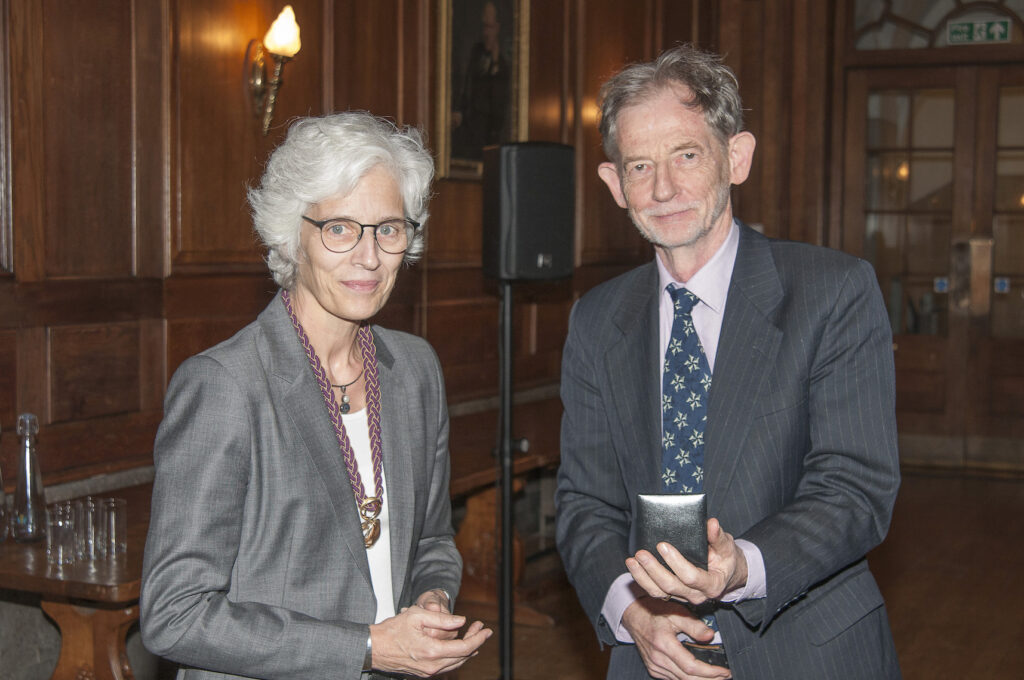
A mathematician with a doctorate in mechanical engineering, Sir John Macleod Ball’s research contributions have spanned diverse areas ranging from the calculus of variations and non-linear partial differential equations to infinite dimensional dynamical systems and the mathematics of liquid crystals. Indeed, his pioneering work linking the esoteric notion of quasi-convexity and its variants in the calculus of variations with non-linear elasticity and rational mechanics paved the way for newer arenas of research that continue to be active to this day. The Sedleian Professor of Natural Philosophy at Oxford from 1996-2019, Sir John Ball has been fundamental in providing a rigorous mathematical framework for tackling many hard problems in non-linear mechanics, understanding microstructure morphology and phase transitions in solid structures and also for the study of liquid crystals.
Aside from his prolific research career, equally significant has been his time as President of the International Mathematical Union and the London Mathematical Society and his efforts to improve the standards of mathematics research and education in the developing part of the globe.
A two-time member of the Fields Medal committee and also being on the first Abel prize committee, Sir John sheds light on his early days in research, his diverse work and interests, his time as President of the IMU, while recalling the singular incident concerning Grigori Perelman and the Fields Medal and finally gives his take on the issues plaguing the mathematics community. And all this, peppered with his penchant for trademark British humour.
Could we begin by hearing a recollection of your schooling and your childhood?
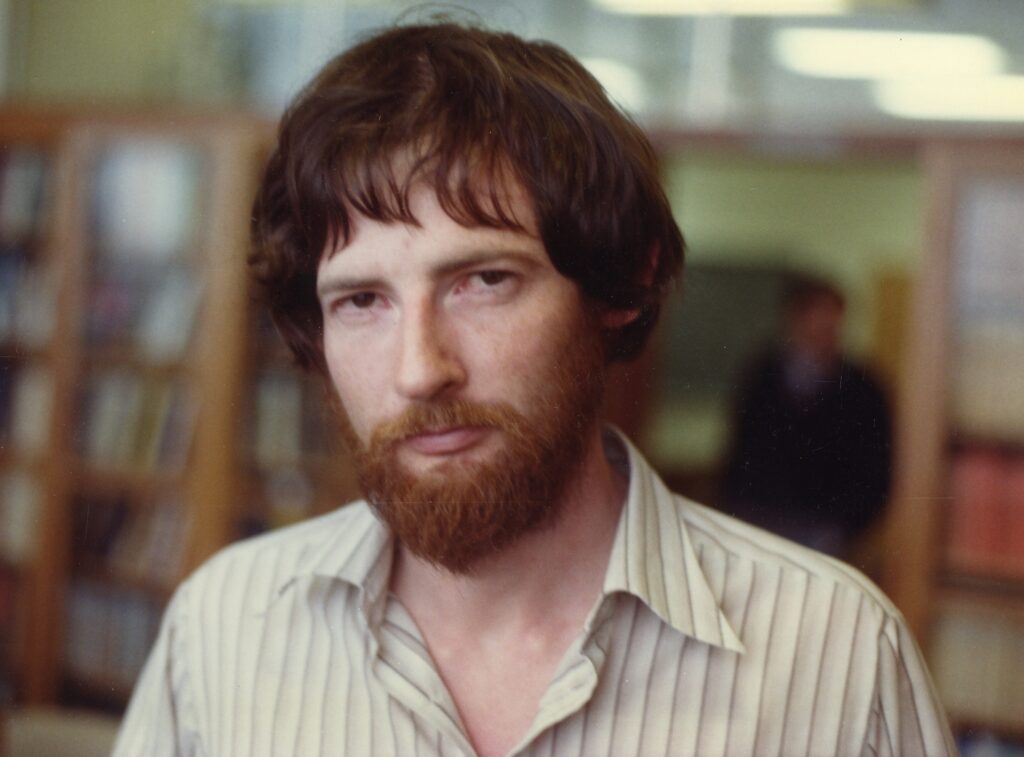
JB: I went to Mill Hill, an independent school in north London. I had some pretty good maths teachers. I think one of them was top of his year at Oxford, but had decided to go into teaching. I did my A-levels and so on there, and got good results. I then went to study at St. John’s College in Cambridge. I got what they called an “Exhibition’’ which is not as good as a “Scholarship’’, but was some kind of partial award. I was one of the two best people at mathematics in my year at school. But when I got to Cambridge, I found that my fellow students at St. John’s were incredibly good. There were about eight or nine of us who were admitted that year to do mathematics. The reason I decided to do mathematics was mainly because both my father and elder brother did engineering at Cambridge, and I decided to do something different to avoid comparisons.
So, during your schooling days, were there any notable influences that led you to pursue maths later on?
JB: No, I guess it was just a subject I was interested in and good at.
Were there any other fields that you fancied taking up at the time?
JB: Well, I did maths and physics for my A-levels. They were the natural choice.
So, after that, you did your PhD.
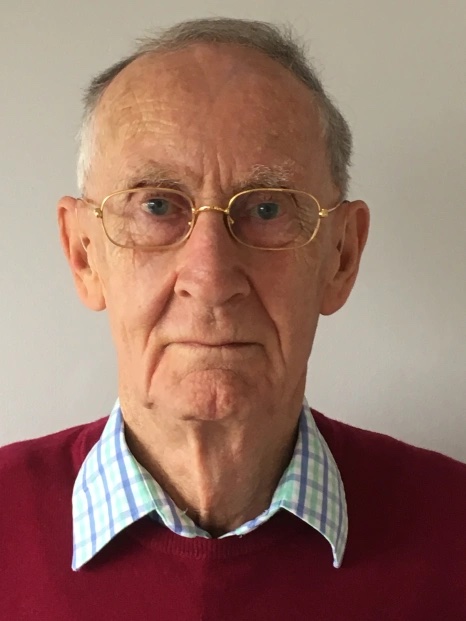
JB: Well, first of all, I didn’t do so well at Cambridge and didn’t get a first-class degree as I had hoped. I didn’t really understand what research was, but I knew I wanted to do research. The first thing I tried to do was to get to Oxford to do algebra. But they would only accept me to do a one-year course, which I would then have to do well at, in order to be allowed to continue to do research. Since I had not done so well in my exams at Cambridge, I didn’t think that was a very good idea. So, I took what was an easy option, which was to approach one of the teachers at my school who had gone to the University of Sussex. Since he knew I was a reasonable mathematician he offered me a university studentship for three years, which I accepted. So, in some sense, I was very lucky. Although he was a mathematician, he was working in the Applied Sciences department at Sussex. So that sort of determined that I was going to work on some kind of applied topic
So that’s how your foray into applied mathematics came about?
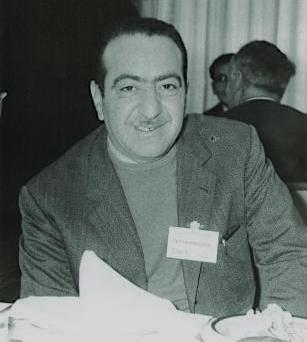
JB: Yes. But although my supervisor may have been a reasonable school teacher, he knew essentially nothing about how to do research. But he had one good student, Mike Alford, who had already been there a year or so. Mike, who had not got any effective supervision himself, recognized that I was worth saving, so to speak. He didn’t want the same thing to happen to me as had happened to him, having to manage doing a thesis all on his own.
What happened was that there was a programme on differential equations going on in the mathematics department, organized by David Edmunds, who eventually became my supervisor. Some really good people were visiting Sussex as part of the programme. In particular, Mike and I went to a course given by Guido Stampacchia, starting with what happened to be the second lecture, having missed the first one because we had not heard about it in time. It was amazing. Afterwards, we were sitting in the back of the room, rueing that we had missed the first lecture. Stampacchia overheard us and asked whether we would like him to repeat it for us. Of course we said no. But anyway, this sort of experience convinced Mike that something should and could be done, and so he went to the Dean of the Applied Sciences department, and said that the present arrangement couldn’t continue, and that I should be transferred to the maths department, which the Dean agreed to arrange. Before that happened, we started going to various activities in this programme, attending lectures and courses of other people, as well as seminars. One of these seminars was given by Robin Knops. He came to talk to us after the seminar, and learnt that I was reading Clifford Truesdell’s stuff on mechanics. I mentioned that I didn’t yet have a research project, and he must have spoken to Stuart Antman. Sometime later, when I met Antman at a conference at Sussex, he said that he had heard that I didn’t have a project.
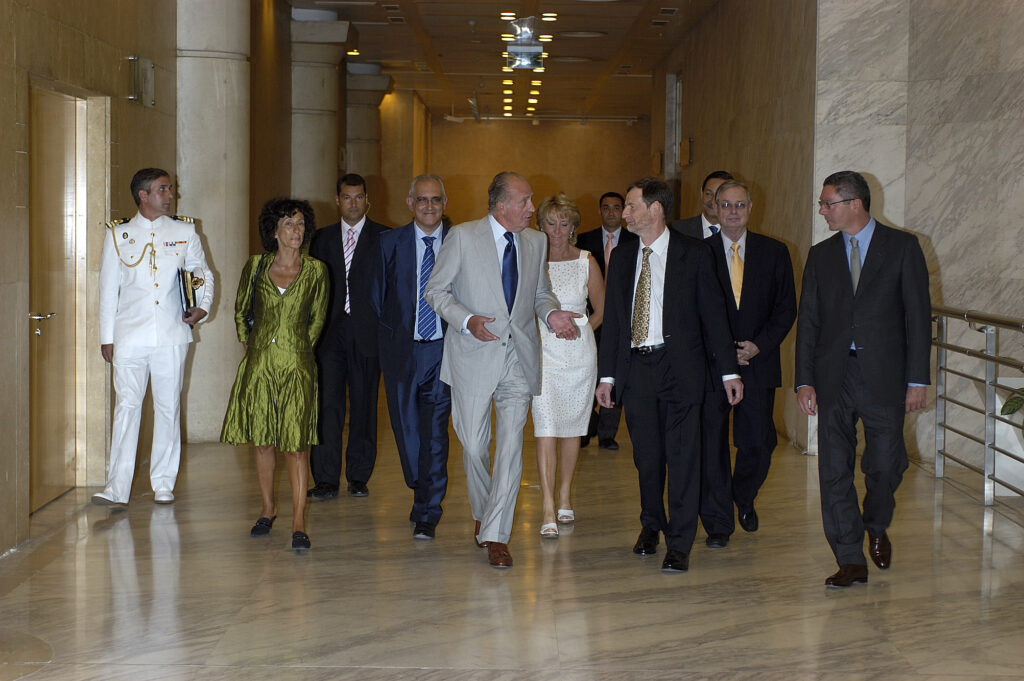
Anyway, Mike had a mini car, and at the end of the conference, he drove me and Antman, and also a well-known mathematician Avron Douglis who was sitting in the front, from the Sussex campus to the railway station. During the short trip Antman suggested I read a paper by Wayne Dickey. He explained what was in the paper, and suggested that I should apply to it the techniques in a book by Jacques-Louis Lions, which was then hot off the press.
Up to this point, I hadn’t realized that anybody could understand research to this extent, that they could say, you know, this is a paper, this is what it does, and this is what needs to be done to it. So, when I eventually changed supervisors to David Edmunds, I did have a sort of project. David’s role was mainly to help me out with the technical issues which I didn’t understand. For example, in Lions’ book, there was a footnote which I couldn’t follow, something about distributions with values in some abstract space. I asked David about this and he said he would think about it, and the next time we met he had eight lines of explanation. He said it was quite tricky, and that I shouldn’t feel bad about not following it. Anyway I had this project and I felt appreciated by somebody. And that is how it ended up OK. Of course, it might very well not have ended up that way.
So, essentially, Stuart Antman gave you your thesis project.
JB: Yes, that’s right. Dickey’s paper was on a model for rods, a somewhat crude model, much less sophisticated than the ones that Antman was working on actually. Anyway I used the methods in the book of Lions to prove existence of solutions and then started to try and prove that solutions converge to equilibria as time goes to infinity. I developed some methods for doing this using weak convergence. Later, I found that Marshall Slemrod had essentially the same idea. But anyway, it went well, and my thesis was fine.
During your time at Sussex, were there any lectures or seminars that you attended that you recall influencing your work or interests?
JB: Yes there were all sorts of good people coming and speaking. I especially remember Jim Serrin giving a great seminar on his theory of tornadoes. There was another course on variational inequalities by Guido Stampacchia which was fantastic. And Gaetano Fichera was also visiting at the same time, though in arranging this David Edmunds hadn’t understood that he and Stampacchia were arch-enemies. Lions gave a talk at some point, and many people came. It was all a very good education.
But at the time the applied maths community was still quite small.
JB: In the UK there was a large applied maths community. But British applied maths, which for the rest of the world was not really considered as mathematics, was heavily influenced by Cambridge and people there. They didn’t believe in theorems and their relevance for applications. So, after my PhD I got a postdoctoral fellowship from the Research Council that enabled me to go to Brown University. It was a natural choice because I was interested in these asymptotic behaviour problems and there were several people I could interact with over there: Jack Hale, Marshall Slemrod and Constantine Dafermos, to name a few.
I spent a year at Brown, though the post-doctoral fellowship was technically at Heriot-Watt, where I had got a permanent position. At Brown I started working on the problem of the existence of energy minimizers in non-linear elasticity, which I had heard from a talk by Stuart Antman at some conference was an important open problem. Happily it worked out well.
Later I gave a short talk at the British Theoretical Mechanics Colloquium in Edinburgh. I described this work on existence in elasticity and mentioned that the hypotheses didn’t cover the neo-Hookean case (for which the stored-energy function is the square of the deformation gradient plus a function of its determinant). I said that maybe the existence didn’t hold in this case. Someone asked, “Do I understand correctly, that the reason you think that existence may not hold for the neo-Hookean case is because you can’t prove it?’’, which I felt to be quite an aggressive question. That was a kind of example of the UK applied maths community’s reaction to rigorous mathematics at that time. Take Cambridge, which had a hugely influential school of fluid mechanics with people like Sir James Lighthill and George Batchelor, and was founded on the tradition of G.I. Taylor. We are talking about the 1970s. Now Leray’s paper on the Navier–Stokes equations and existence was in 1934. That was 40 years before and it had no effect whatsoever on Cambridge. They just thought that physical intuition was enough.
There were two people at Cambridge who somehow rebelled against this, and one was Brooke Benjamin, who was really a top fluid dynamicist. But he had got interested in what Lions and such people were doing in France and he left Cambridge to form an institute in Essex. And the other was Gerard Friedlander. He stayed at Cambridge, but was quite isolated. He worked on wave front sets and similar areas. So, in the early part of my career, there was quite a friction. The British applied maths community didn’t particularly appreciate these small groups of people who were trying to do things properly, so to speak. They viewed it as just dotting the i’s and crossing the t’s on things that they already knew were right from their intuition.
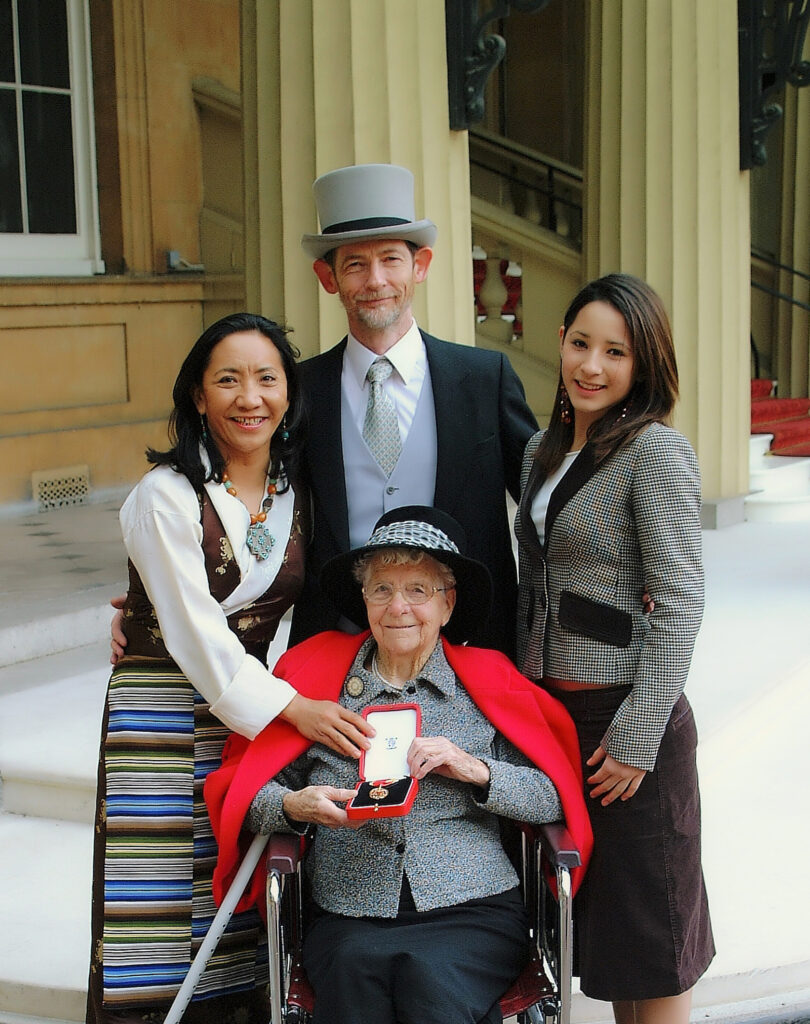
So there was resistance towards bringing in rigour from pure maths.
JB: Yes, absolutely.
But did you feel that this was more typical of the British maths community or…?
JB: It wasn’t the same in America at all. It was completely different.
The American community was more receptive.
JB: Absolutely. And it was so in France as well.
Talking about France and this friction between rigour and intuition in applied maths reminds me of the Bourbaki movement in pure mathematics that sought to establish a formalism with strong demands for rigour. So, did you, or do you still, feel a need for such a movement in applied mathematics?
JB: No, I don’t think so. In some sense, I was very heavily influenced by the rational mechanics as propagated by or championed by Truesdell. I really appreciated it, learning a lot from a course I took from Robin Knops in Edinburgh. I liked having a very clear basis for mechanics, balance laws, constitutive equations and principles and so on. Not exactly axiomatic, but it was definitely much more rigorous than the traditional British approaches to these things.
I am sure that when fluid mechanics was taught in Cambridge for generations, they never really developed continuum mechanics as applying to all materials, with things like discussions of the Cauchy stress tensor, and then specializing this to fluids.
Going back to what you said, did you feel at any point during your research career that too much focus on rigour in applied maths (when modelling physical phenomena) can sometimes be an impediment or is it always necessary?
JB: Yes, sometimes it can be an impediment. There are those who take models that are kind of handed down from someone else, and they work on them just as equations. They don’t really care about whether it’s a good model as it’s not their department in some sense. Whereas I think that you get a lot by trying to get involved in the modelling and trying to understand what everything means.
On the other side, of course, you have in pure mathematics, pathologies related to results that sometimes are not really tackled. But you cannot probably afford to do that when you’re dealing with mathematics in an applied sense as you are dealing with things that have physical relevance and pathologies may be quite important in that context.
JB: I am not so sure. While trying to prove things which are important, you naturally get involved with these pathological cases because you want to rule them out properly. And sometimes you wonder whether they may not signify something. For example, in non-linear elasticity, you take some stored energy function which you know is a good model for rubber. We know about the existence of minimizers, essentially what I proved. But we know almost nothing else about the minimizers. We don’t know whether they have any extra regularity at all actually. For rubber, there is a singularity observed, which is cavitation,1 something I worked on a lot, but you can put hypotheses on the energy function which will eliminate cavitation and ensure that energy minimizers in suitable function spaces are continuous. But we still can’t prove that the minimizers are smooth, and so you start thinking about what might be the singularities and what they might mean physically.
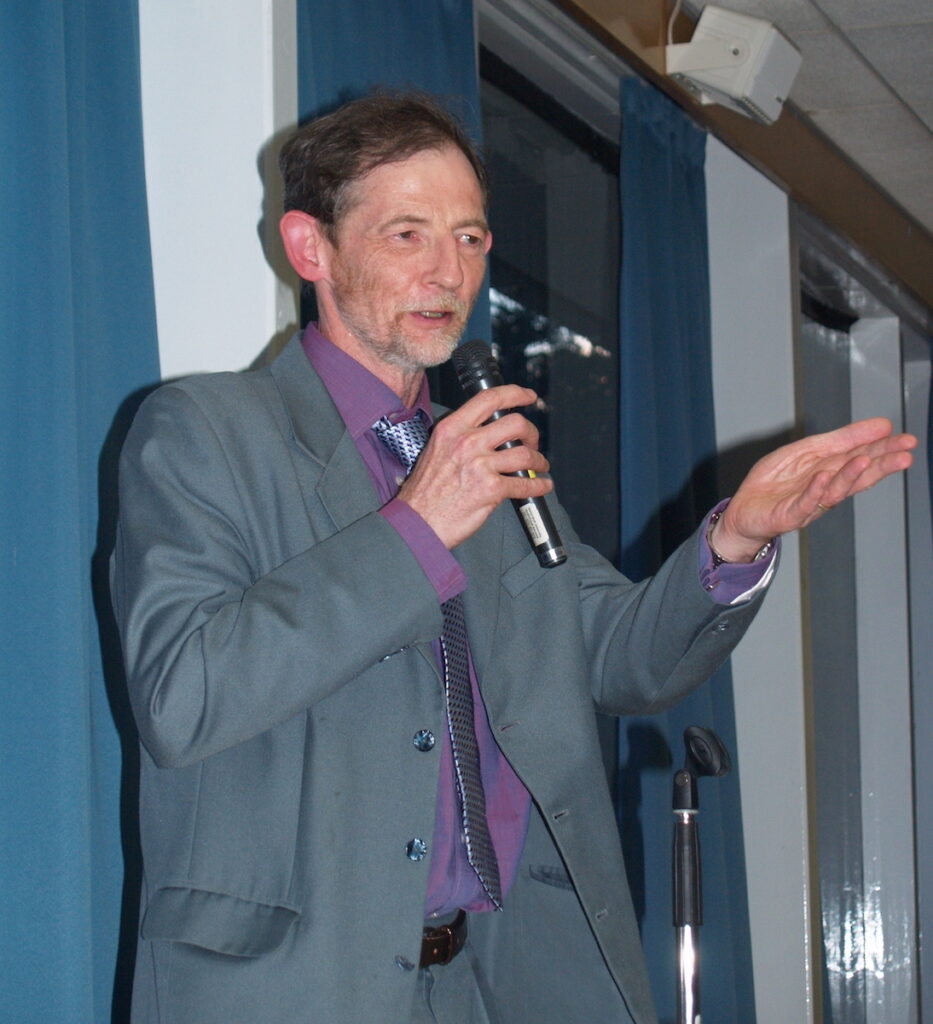
Right. Moving on, I notice that your doctorate is in mechanical engineering.
JB: That’s right. That was an effect of being in the applied sciences department, to which I still belonged even though I was being supervised by David Edmunds in the mathematics department. I always wondered whether it might be useful to have a PhD in mechanical engineering!
How useful did it turn out to be?
JB: I don’t think it has made any difference really at all, but I suppose it could have done if I had gone in a different direction.
You mentioned Truesdell’s influence on your work. The rational mechanics he advocated did experience some pushback…
JB: Yes, that’s right.
But, what were your own views on that? Did you think it had something novel to offer?
JB: Definitely yes. I don’t know whether you have read the Handbuch der Physik articles Truesdell co-authored. There are two of them, one by Truesdell and R. Toupin, which is The Classical Field Theories, and the other by Truesdell and W. Noll, which is The Non-Linear Field Theories of Mechanics. These books have introductions that are fantastically appealing, and Truesdell was a great writer. I was very excited reading the introductions to these books. In the Non-Linear Field Theories article there are whole large sections on the right conditions you should put on the stored energy function for an elastic material, though in the end I found out that some of these conditions were wrong. Nevertheless, it was important to have these ideas to look at, because then you could decide that they’re wrong. So somebody addressing these issues was important. While it turns out that those parts are now outdated, other parts of these books are fantastically valuable still, for example the treatment of kinematics is really great. Overall rational mechanics was a really big contribution.
If you look back to the early days, we had big names like Gauss, Euler, people who made fundamental contributions in mechanics and pure mathematical areas at the same time. And somewhere down the line that versatility seems to have been lost.
JB: Yes, you’re absolutely right. I don’t know who was responsible, but I suspect it was the British. Maybe it was Hardy. Almost all the great mathematicians that we revere, Riemann, Cauchy, Gauss, Newton and so on didn’t see any distinction between pure and applied maths. For example, in 1827, Cauchy wrote down the equations of non-linear elasticity, and even derived them from a molecular model; but at the same time he was developing complex analysis, which is really incredible. Somewhere down the line we got these separate departments of pure mathematics and applied mathematics which was very damaging, I think.
So, we talked about how the applied maths department was resisting the rigour. But the other way around, how welcoming was the pure maths community to applied mathematicians?
JB: Yes, of course, there was a lot of derision to the effect that these people are not doing real mathematics.
Somewhere down the line we got these separate departments of pure mathematics and applied mathematics which was very damaging, I think.
Yes, I presume that normally most people like to think of applied maths sitting somewhere closer to physics.
JB: But on the other hand, pure mathematicians felt a kind of social pressure to be doing something more relevant. So, they would be quite receptive to applied mathematicians who prove theorems and so on.
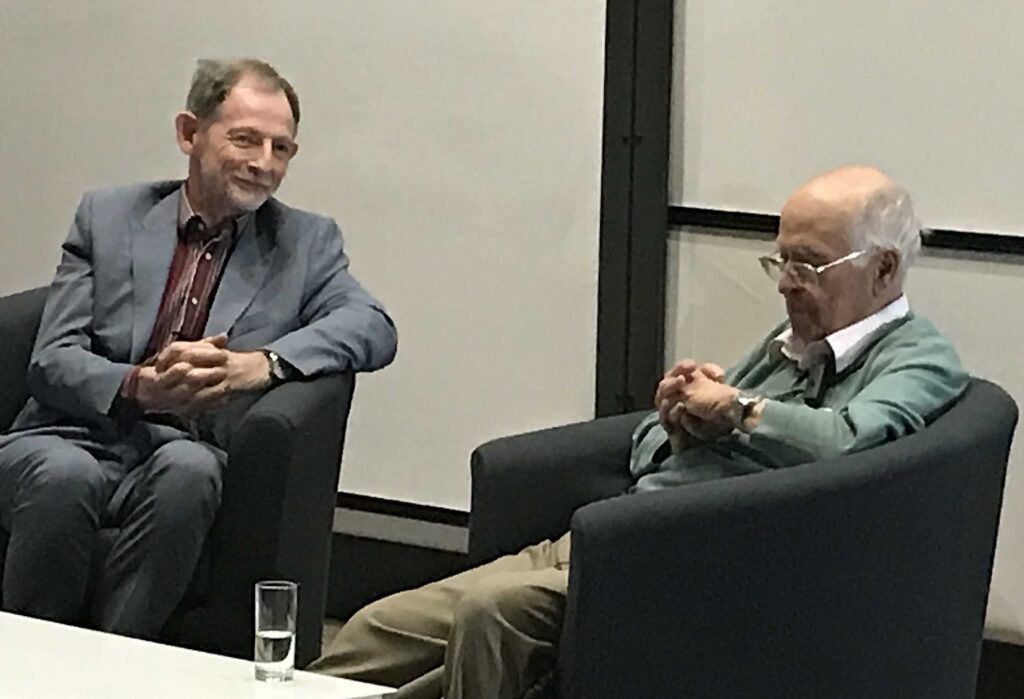
Very true. Moving on, you were on some very distinguished committees. You were on the first Abel Prize committee. How did it work? I mean, this was the first time it was being awarded, and I presume there were quite a few people who needed to be recognized for their work at the same time. I think the year that you were in committee, it was given to Jean-Pierre Serre.
JB: Yes, the first thing was that there had to be guidelines for the award. Actually, I wrote these with David Mumford, though I’m not sure whether the guidelines have always been followed. They said that the Abel Prize should cover all areas of mathematics. There were other things in the guidelines, like you couldn’t be awarded the prize within four years of being on the committee. I resigned from the committee for a reason I don’t remember, but it wasn’t on principle, more a pragmatic thing to get rotation on the committee or something like that. I was only on it for one year.
I had to give the speech at the first Abel Prize banquet. They told me in advance that some humour would be good, which ruined the week before as I worried about what to say. I was sitting next to the Queen and a few seats away from Mr Bondevik, the Norwegian Prime Minister. So I told this joke which was a modification of something I had heard from somebody else, which was that there was a mathematician, an engineer and a politician. They were asked why it was that we can’t see the other side of the moon. The engineer said that it was because the moon is not transparent. The mathematician said that they didn’t know, but could prove that this was the case for moons of radius less than a foot, or something like that. The politician said that it was all the fault of the previous government! I was very lucky because I didn’t realize there was an election coming up in Norway, and the banquet hall of the castle was full of politicians and civil servants; so, that already got a big laugh. The joke continued that the politician promised that if elected, we would be able to see the other side of the moon! So it went down extremely well, and I was very happy and relieved!
You were also on the Fields Medal committee in ’98.
JB: In fact, twice on the Fields Medal committee. The second time, when I was president of the IMU, I chaired it.
There is this whole aura and mystery around how the Fields medalists are chosen. As you were part of that, do you have anything to say about how the process normally goes…?
JB: Well, you can nominate people for a Fields Medal, but I don’t think this has much effect. In some sense, one hopes that the committee already knows through the grapevine who are the potential candidates.
But there is always this risk of overlooking good work. Because it’s very hard to gauge the potential ramifications of some work in a short time, right.
JB: That’s right. But it is a matter of people’s opinions. I suppose it’s probably typically the case that you start with a dozen people who more or less everybody realizes are the people you have to consider, and then you write to people for their opinions, as happens on many other committees.
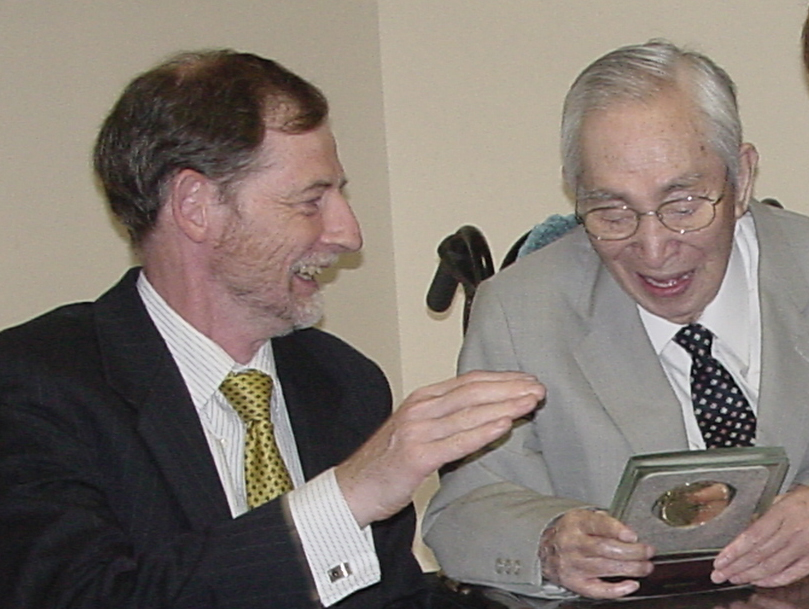 |
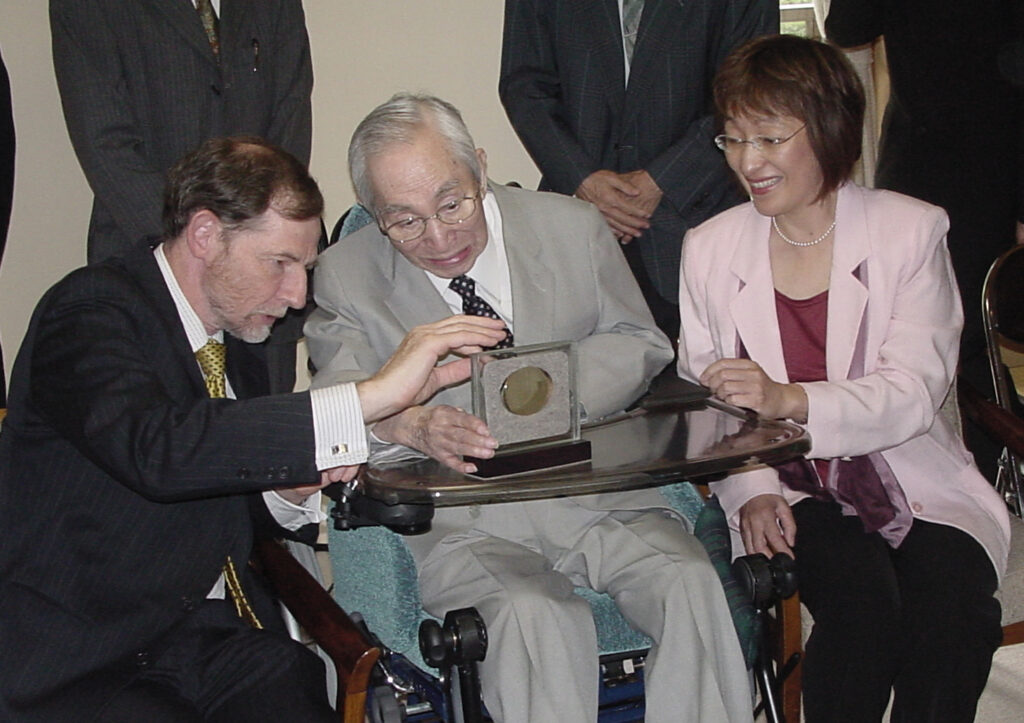 |
So, you were saying that for the Abel Prize, there are some guidelines fixed.
JB: Well, the Abel Prize is a bit different. For the Fields Medal, there is a real issue of assessing the importance and the correctness of what people have done. Whereas for the Abel Prize, there is no doubt what people have done. You are not evaluating the technicalities or the mathematics, just evaluating how important it is.
You were also the president of the IMU. Would it be right to say that IMU has had a greater affinity towards pure mathematicians? I think you, and Lions before you, were the only applied mathematicians to become presidents.

JB: Well, no, because since then there has been László Lovász and Ingrid Daubechies.
True, I missed that. It is now more inclusive then.
JB: But there is now also the International Congress on Industrial and Applied Mathematics (ICIAM). But I think it’s still the ICM (International Congress of Mathematicians) which is more connected with rigorous applied maths.
The Fields medals have been normally awarded to the classical areas. Probability is a recent entrant.
JB: Yes, exactly.
I think it was during your time that the Gauss Prize was initiated.
JB: Yes, that’s right.
Was that something that you intended to start?
JB: No, it was not my idea. It was the idea of, and funded by, the German Mathematical Society. The first Gauss Prize was awarded to Kiyoshi Itō. He was too ill to come to Madrid to collect it. It was his daughter Junko Itō, a professor of linguistics at the University of California, who accepted the medal on his behalf. But I thought it would be nice to present it in person. So I went to Japan to present it to him. Junko Itō looked after me very well. It was going to be presented at Kyoto University, but Professor Itō was not strong enough to go to the university. So I presented it to him in his nursing home. It was a very lovely occasion, with all the doctors and nurses who were there.
Quite touching…
JB: Yes.
This was the Madrid ICM… There was one more event, let us say, a singular event, connected with the ICM in 2006. I am, of course, referring to Perelman’s refusal of the Fields medal and all that followed. It is well known that you actually went to St. Petersburg to convince him to accept it.
JB: I didn’t necessarily go to convince him. I thought he was probably going to reject it. I went to understand, and thought that maybe I might be able to persuade him differently. At least that way I would know exactly why he was rejecting it.
Ah, so almost everyone on the committee knew that he would probably reject it at the time.
JB: Yes. The Executive Committee of IMU, before the Fields Medal Committee had deliberated at all, already knew that Perelman was likely to be a very strong candidate. They also knew that he had already turned down a European prize. So the Executive Committee made a decision that if the Fielylds Medal Committee were to award him a Medal, then as far as we were concerned, he would be a Fields Medallist. If he chose not to accept it, that was up to him, but from our point of view he would have a Fields Medal. And that was very clearly the right thing to do. Because otherwise, if we had only awarded three medals instead of four, then everyone would know who the missing fourth person was, and it would be an untenable position to not recognize such a very important piece of mathematics. So, that was an initial decision that was made.
So, you went there, and spoke to him. Was it possible to see from his perspective; rather, did you feel that his reasons for rejecting were justified?
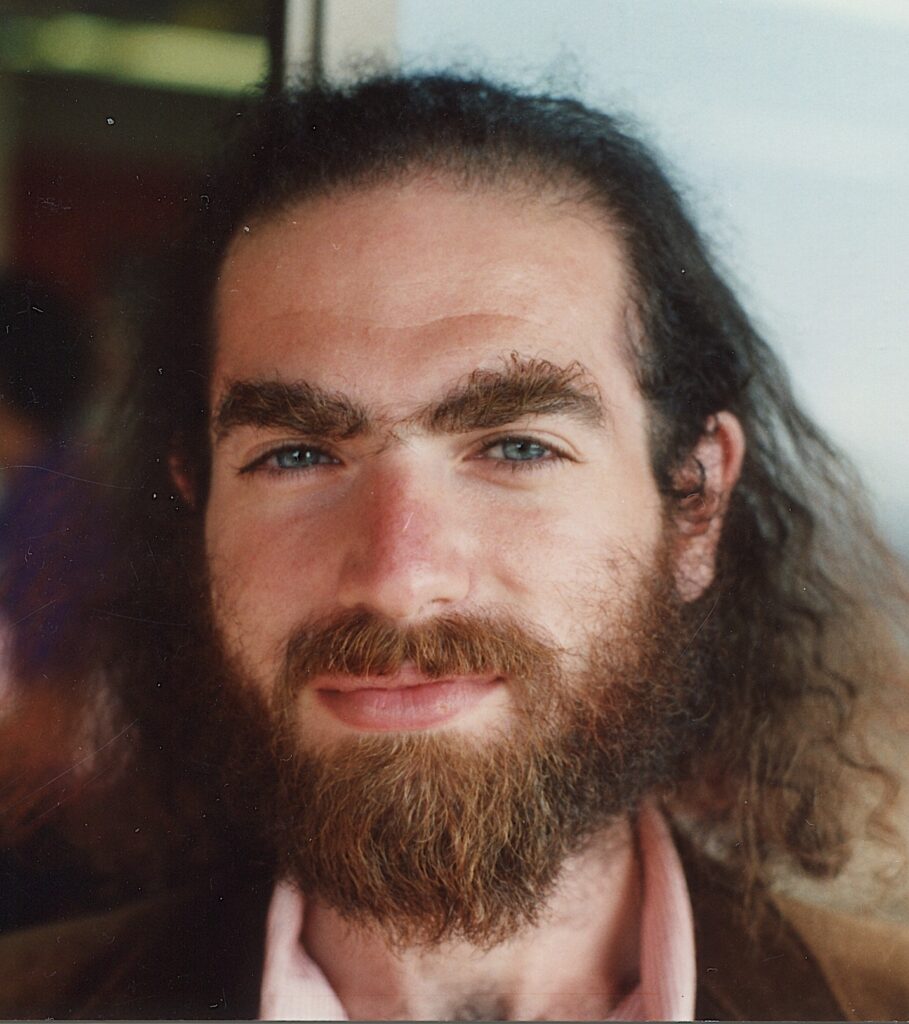
JB: Well, I understood the reasons. Actually, it was interesting. I keep wondering what to do, because I have notes made at the time of the meeting with Perelman, which are very vivid. And I have not published them, although I think other people would be very interested in them, because I told him that our meeting was confidential. So, maybe what I should do is to redact some of the personal things… I don’t know. I feel a bit silly not publishing them because I know people would be very interested, but on the other hand, I feel I shouldn’t because I said to him that this is confidential. But he asked me not to mention anything about his family.
But you understood his kind of philosophy.
JB: I said to Perelman that if he turned down the medal then people might think of him as being ungrateful. However, the press he got was very different from that, and he was instead viewed as some kind of pure hero. That was very interesting, but it might have happened completely differently. Immediately after the ceremony, I was escorting King Carlos of Spain, who was mingling and talking to people, when some reporter stuck a microphone in front of me and said he was from the Associated Press and had a question. I said, well, you know the news conference is in half an hour and I am with the King. He said, “But do you consider that this was a snub?’’ I said no. And then, maybe an hour or two later, I was talking to a reporter from the New York Times, and he said to me “Associated Press has reported you as saying you don’t consider this a snub’’. I realized then how the very first thing you say will really affect the coverage.
In the news conference, a German reporter asked me, “Do you have any concerns for Perelman’s mental health?’’ I had had some advice about dealing with the press and my answer was, “No. He thinks about things differently, and that’s what makes life interesting’’. That turned out to be a good answer. But suppose I had said, which I might easily have done, “It’s not my business to speculate on things like that’’, then the reporting could have been completely different, and could have been along the lines of “The president of IMU refused to be drawn on the issue of Perelman’s mental health’’, which would have changed how the whole story was viewed.
It’s really the only time I’ve ever been connected with a big news story. I knew it was going to be a big story, although I didn’t realize how big. That day on the BBC website, it was the story with the most coverage. And it touched the common person. I remember I went to have my hair cut, maybe two or three weeks later. The barber asked me what I do and I told him I was a mathematician. Then he asked, so what about this Russian guy who didn’t accept the medal?! So, it touched the common person in a way which I don’t think any other mathematical story has done.
I think a lot of people in the maths community sort of regarded him as this genius with a lot of integrity. But I don’t think anyone viewed it as disrespecting the medal.
JB: Yes, that’s right.
Being a mathematician, I was wondering if it was a rather strange experience having to handle the news media in an event like this.
JB: Fortunately I had advice from Marcus du Sautoy, my colleague in Oxford, and he told me the basic rules about how you handle the media, like saying that these things are off the record or non-attributable or something like this. So, I knew what not to do. Whereas, there was the famous article in the New Yorker about Perelman. Some of the mathematicians who had been interviewed for it just thought they were having a friendly chat with a journalist. They didn’t take any precautions, and they were quoted verbatim. They were, of course, shocked as they had no idea that what they were saying was going to appear in print!
There is a book Perelman’s refusal, a fictional depiction of your famous meeting with Perelman in St. Petersburg.
JB: Yes. It is written in French, by Philippe Zaouati. The American Mathematical Society (AMS) translated it. It actually reads better in French than it does in English. Unfortunately the statement of the Poincaré conjecture in the translation is unclear.
Oh!
JB: So now they seem to have stopped advertising it. I think you can still buy it.
It touched the common person in a way which I don’t think any other mathematical story has done.
Yeah, you can… It is interesting that there is a published book with a fictional account when you have detailed notes of it yourself.
JB: Yes, correct. I met the author actually. But I couldn’t tell him exactly what happened.
Looking back at your interaction with Perelman, was there any influence on your own outlook on things, mathematical or otherwise?
JB: I don’t think so. I don’t think it has had any effect on me. Of course, it was an important moment, and I will always remember it. But I don’t think it affected my mathematics or my philosophy or anything like that.
I ask this because I imagine him to be a strong personality, I might be wrong of course.
JB: Yes. But he was very courteous. I think he’s someone who remembers things very vividly. And also he had very strong principles about what was right and wrong on the one hand, but didn’t seem to be bothered about things which might otherwise usually upset people.
Talking about Perelman, and picking up on the seeming distinction between pure and applied maths, a thought that comes to mind is that the genesis of the Ricci flow technique, that helped solve the hundred-year-old Poincaré Conjecture, is actually the heat flow equation that models a physical phenomenon. In fact, the heat equation method has yielded tremendous success, applied to problems in differential geometry! Would be nice to hear your take on this.
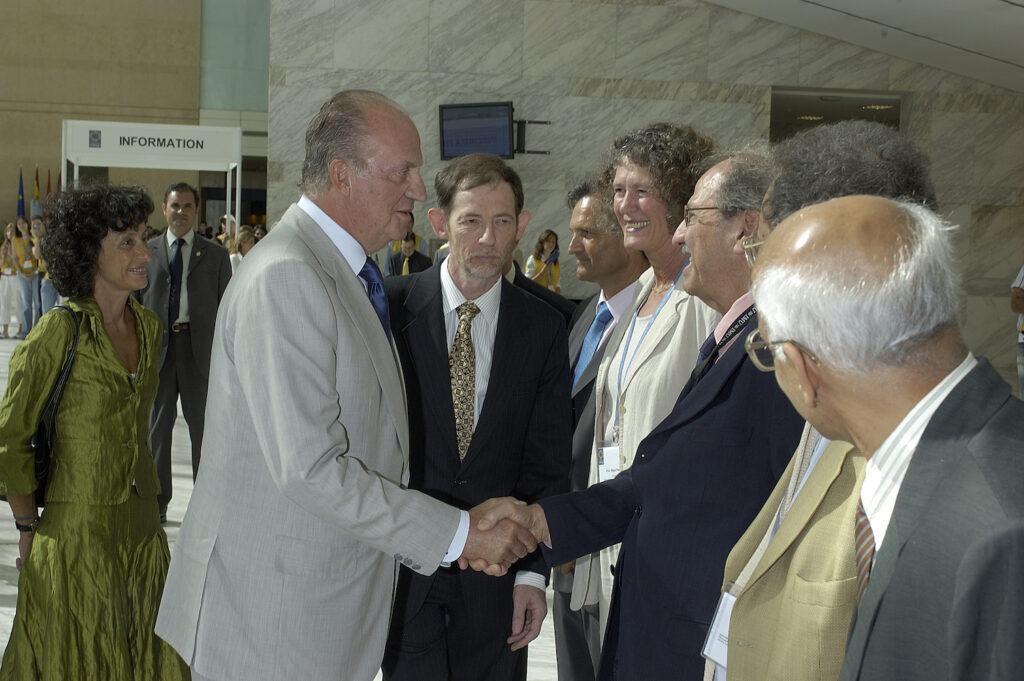
JB: I think that’s typical of how mathematics works. Some piece of mathematics is suggested by the world around us. Then it is developed on the basis of its logical structure, and later the development gets applied to some other situation.
Since you yourself have been awarded with prestigious awards like the King Faisal Prize and the Sylvester Medal, what is your disposition towards receiving awards?
JB: Well. It was nice to receive the King Faisal Prize, in particular because it came with a lot of money! Most of the other prizes I have received have come with no money, or relatively little money, but they are always special. I was recently awarded the De Morgan Medal of the London Mathematical Society (LMS) which has people like Bertrand Russell and Michael Atiyah among previous recipients, and it felt a real honour.
Moving on, you mentioned Brooke Benjamin whom you succeeded for the Sedleian Chair of Natural Philosophy. I was wondering about the connotation of the word “Natural philosophy’’.
JB: The Lucasian Professorship in Cambridge, which was Isaac Newton’s chair, is a chair of natural philosophy; as is the Sedleian Chair, which is the oldest science chair in Oxford, but in both cases natural philosophy has evolved to mean applied mathematics. The first holders of my chair, however, were scientists in some sense, so that natural philosophy meant the philosophy of nature. There’s a recent book published by OUP Oxford’s Sedleian Professors of Natural Philosophy, the first 400 years which gives a lot more background.
So, would you consider what you do fits in well with “Natural Philosophy’’?
JB: Well, I guess so.
Coming to your term as President of the IMU, did you feel that the IMU was, and is, doing enough to promote mathematics in the more marginalised parts of the world?
JB: That was something I tried to encourage. The trouble is that to do that effectively requires a lot of money. For example, the ICMS [International Centre for Mathematical Sciences] which I helped set up in Edinburgh, is very successful, and was founded as a direct result of a visit by Abdus Salam to Edinburgh. In his speech of acceptance of the Edinburgh Medal, Salam asked why Edinburgh couldn’t have some institute for science in developing countries, modelled after the Institute for Theoretical Physics in Trieste that he founded. That was how ICMS began, and its mission explicitly mentioned developing countries. However there was very little money for that, and the major funding it received from the UK Science and Engineering Research Council could not easily be spent in that direction. Just recently they got a bigger grant; so now more activities for mathematics in developing countries are planned.
Some piece of mathematics is suggested by the world around us, and is developed on the basis of its logical structure.
But you evidently feel that much more could be done.
JB: Yes, of course. One of the issues that words arose was over Africa. The IMU was in some sense connected with a project to support mathematics in Africa that was partly supported by the World Bank. At the same time, AIMS (African Institute of Mathematical Sciences) was founded in South Africa. The IMU’s project aimed at collaborating and planning with people already in maths departments in Africa without imposing things from outside. This was continued by a LMS-IMU scheme called MARM (Mentoring African Research in Mathematics). The idea is that some faculty in the UK, or sometimes in Europe, establish a mentoring relationship with a maths department in Africa. I am no longer associated with this, but am still associated with an institute in Benin. AIMS now has autonomous institutes in different African countries.

So, on the contrary, do you think on the Asian side, in countries like India, things are relatively better?
JB: It should be you who tells me about the state of Indian mathematics! India has some very high-quality undergraduate institutions, but I don’t think that’s mirrored by a similar number of top research institutes. At some point, it was just the Tata Institute [TIFR] more or less. I once helped review the Tata Institute, when Michael Atiyah was the chair of the committee. As part of the review I went with Cathleen Morawetz to TIFR Bangalore, which I visited again recently. Certainly the research profile of mathematics in India is improving, but there is a long way to go.
One problem is that the general university system in India seems extremely bureaucratic. There are a lot of very high-quality Indian mathematicians. India is not exactly poor nowadays, though of course, there are large numbers of very poor people, and as an economy largely driven by IT [Information Technology] it has great scientific potential. The country could easily afford to bring back top international Indian-origin scientists to India and pay them well, but the system doesn’t allow this.
How are things on the eastern side here in Japan or China?
JB: I suppose that compared to India, Japan is a high-level scientific country, right? I work a lot with material scientists, and that area is very strong in Japan. And mathematics is very strong too, especially on the pure mathematics side. But then you have other Asian nations like Cambodia, which has hardly any mathematicians at all. And there are countries like Laos, Thailand and Nepal with few mathematicians. Vietnam, on the other hand, has a quite vibrant mathematical community. As for China, the situation is complex. For example, one of my students is Tibetan and the only native Tibetan to get a PhD in mathematics in modern times; he is now at the University of Tibet in Lhasa. I went there two or three times, and the last time I even wrote a report on the department. The situation there is very different from Beijing or Shanghai, for example, where you will find universities which are top-class and with much better facilities.
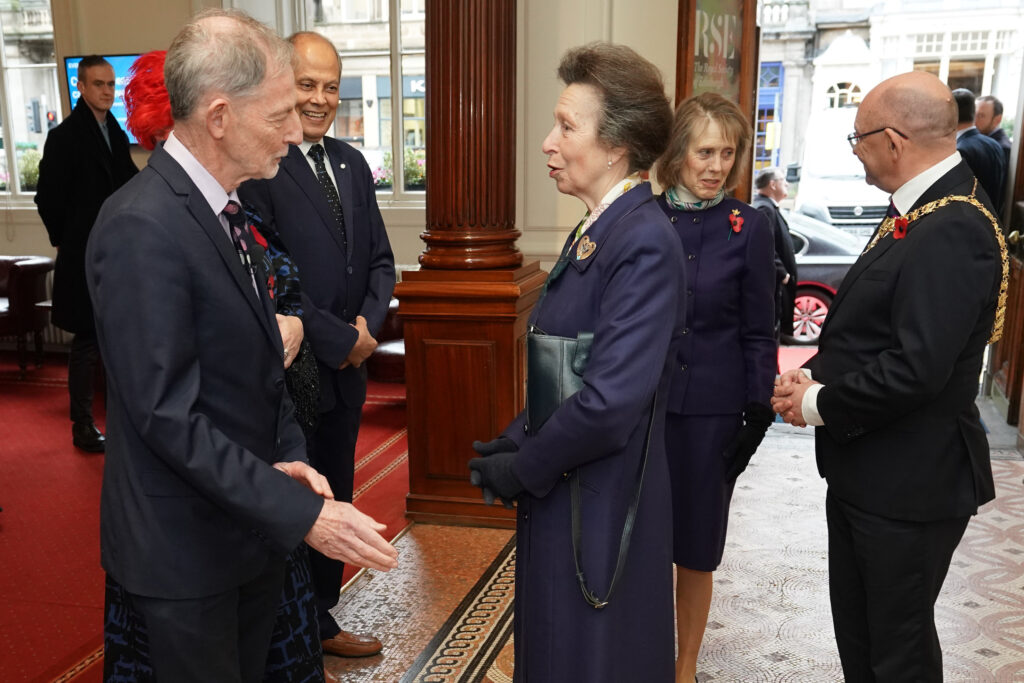 |
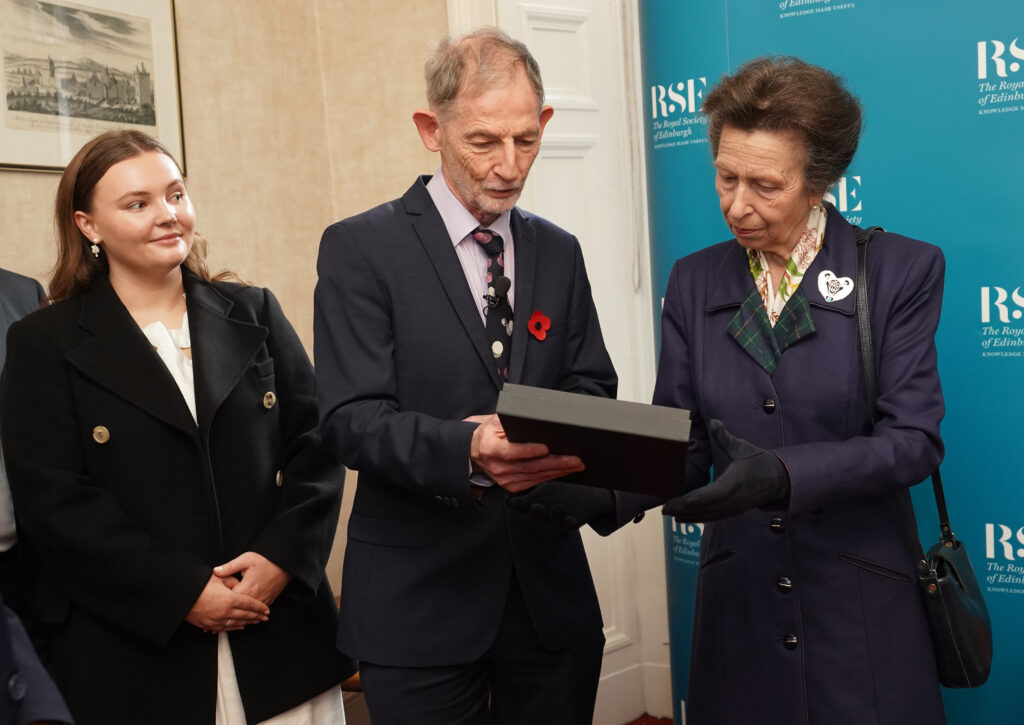 |
| Visit of the Princess Royal on 8 November 2023. Stewart Atwood, RSE | |
Do western universities have more freedom for a researcher?
JB: Not necessarily, if you compare them to a country like Japan. Of course, freedom is a loaded word. I have a part-time position in Hong Kong where there are a number of very good universities. And certainly if you are doing science, you will have intellectual freedom in these universities. And I think the same is true in mainland China, where if you’re doing mainstream science it is just like universities in the USA, with a similar tenure system. But if you are studying social science then you have to be careful what you say.
But do you feel that there are still things to change in these places?
JB: Well India could certainly do a lot better. Japan is doing well anyway. This institute [Okinawa Institute of Science and Technology, Okinawa, Japan] is itself a very interesting project.
Do you have suggestions as to which Indian universities/research institutes could focus on in priority, to improve?
JB: I think the most important thing is to identify future research leaders and give them the opportunities and facilities so that they stay in India and attract others.
One thing that came to my mind was that it is normally considered quite difficult to maintain a prolific research output with many of these high-profile positions. So how hard has it been for you?
JB: That is the situation for me now, since I am president of the Royal Society of Edinburgh (RSE), which is Scotland’s national academy. So, that does add a lot of stuff to your workload, though I continue to find time for research.
So, have you ever been hesitant in accepting these positions because they might impact your research?
JB: The invitation to be president of IMU came as a complete surprise; I had no idea of this possibility at the time. I couldn’t possibly turn down something like that. It is quite a complicated story on how I became president of the RSE, but I couldn’t turn it down either.
You didn’t see it as something that had an impact on research.
JB: Occasionally when you have these jobs, you run into some difficult set of issues which are extremely time-consuming. This is especially the case with personnel problems. Occasionally in such jobs or on committees there is some heavy thing that arises, and you feel very responsible for the outcome somehow. Once or twice I’ve found myself associated with some tough decisions which some other people might not have had the stomach for. But the reward is that later everybody is smiling. Sometimes one or two individuals can cause an awful lot of trouble in an institution, and you have to wave them goodbye, which may be unpleasant but can make a real difference. It is not something that I have done very often, but it stays with you.
But you have felt comfortable being in these positions.
JB: Yes, but I wouldn’t have been so comfortable if there weren’t one or two other people who were trying to do the same thing, so that it wasn’t completely lonely. I think sometimes you get people who are in top positions and really are entirely on their own. Fortunately, that has never happened to me. Also, I have always been kind of convinced that some action is the morally right thing to do, if you like. If you weren’t convinced then it would be very messy and unpleasant.
You have an Indian connection. Your wife is from Tibet but grew up in India.
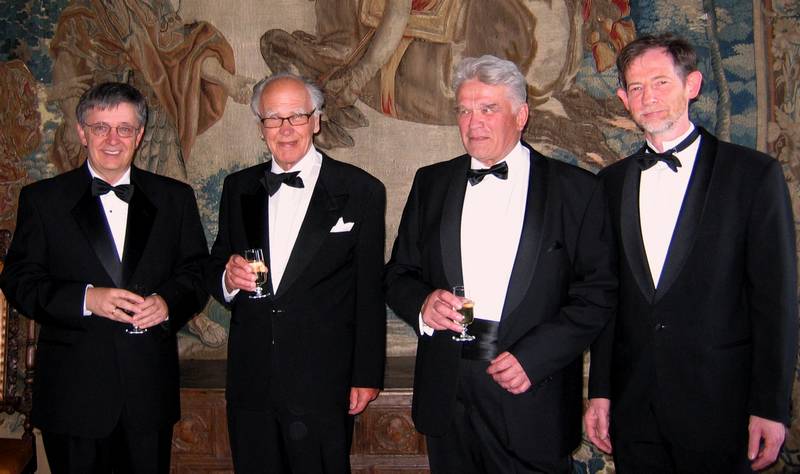
JB: My wife Sedhar was a Tibetan refugee. She crossed the Himalayas at the age of six or seven and ended up initially in Nepal and then moved rapidly to Dharamshala, where she was at the Tibetans Children’s Village for a year or so. But then the number of refugees was so great that the Dalai Lama had a policy of sending children to other schools. So Sedhar was sent to Dr. Graham’s Homes, a Christian school in Kalimpong set up by a Scot, John Anderson Graham, for Anglo-Indian children. This is a school with a great and noble tradition, and has a magnificent geographical location from where you can see Kanchenjunga. Unfortunately as a result of years of rotten management it is a shadow of its former self. So I have been involved, and still am, with trying to do something to save the school. In this endeavour my wife is a principal activist, and we are slowly beginning to make some progress with the help of a group of experienced mentors and active alumni. We were there in September 2022.
You were also in India for the ICM.
JB: Yes, that ICM was in Hyderabad. But it was after the 2006 ICM and so I wasn’t really heavily involved. I was still on the executive committee, but on the way out.
There were very few occasions where a developing country was chosen as the site for the ICM.
JB: Yes, It was in Brazil recently, but you are absolutely right. It has never been in Africa, for example.
Yes. I hope there is one.
JB: Yes.
Have you ever had this feeling that more people gravitate towards pure maths? And consequently that sometimes this compartmentalization has ended up stopping some really bright minds from working on important problems in applied mathematics?
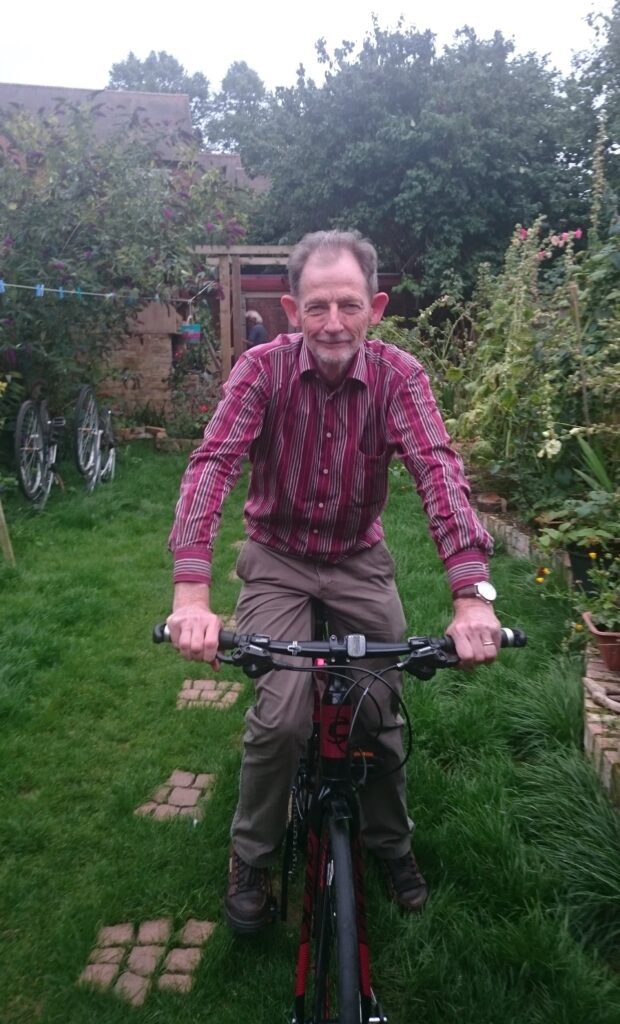
JB: Yes, I don’t believe in this division at all. But, in some sense, I think applied maths needs some of the best pure mathematicians. I don’t think there is a barrier. And if there was one, it is much less now than it used to be. The divisions are being clearly eroded. There are great mathematicians like Terry Tao; you wouldn’t really call him a pure mathematician. I mean, he’s a mathematician, period. He’s doing many things such as compressed sensing…
Yes, a mathematical universalist, but there are very few of them.
JB: I sometimes think there are three Terry Taos! I don’t see how it’s possible for one person to do all that.
In your work on microstructures in solids, there was this serendipitous connection that actually ended up with the discovery of new materials. Tell us more about that.
JB: The discovery was not immediate. I did this work with Dick James and in our work there are some very special situations corresponding to particular values of parameters. Microstructure in solids is driven largely by compatibility. So, you have solid phase transformations in which there is a change of shape of the underlying crystal lattice at a particular temperature.
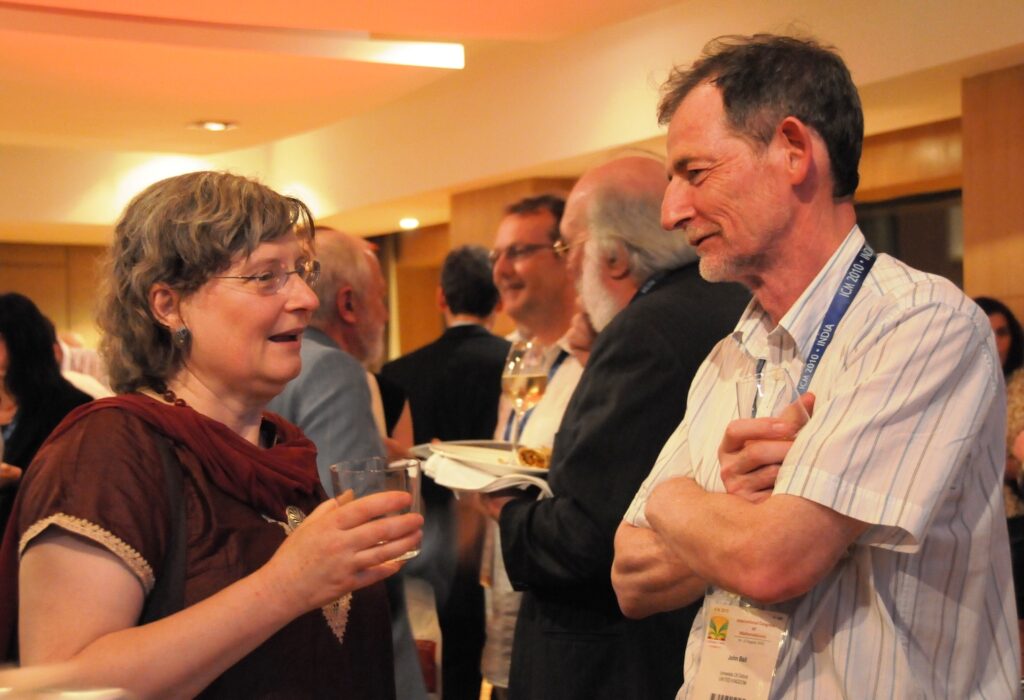
My reaction to these conditions was that they were uninteresting because in physics parameters are never exactly equal to 1. But Dick James had more faith in mathematics, perhaps something he inherited from being a student of Jerry Ericksen. He said, well, let’s try and construct materials where these relations are very nearly satisfied. And then quite surprisingly, you get absolutely spectacular materials. The thermal hysteresis drops from about 50^{\circ}C to 2^{\circ}C, and you get completely different patterns of microstructure that were never seen before. So these are materials essentially discovered by mathematics, but with the help of combinatorial chemistry. It is a kind of inverse problem. You want the parameters to take certain values, but you don’t really know the alloy composition to get them there. There is some kind of art to getting them close, and then combinatorial chemists can simultaneously check many different compositions to get you closer and closer. It’s like a chemical Newton’s method!
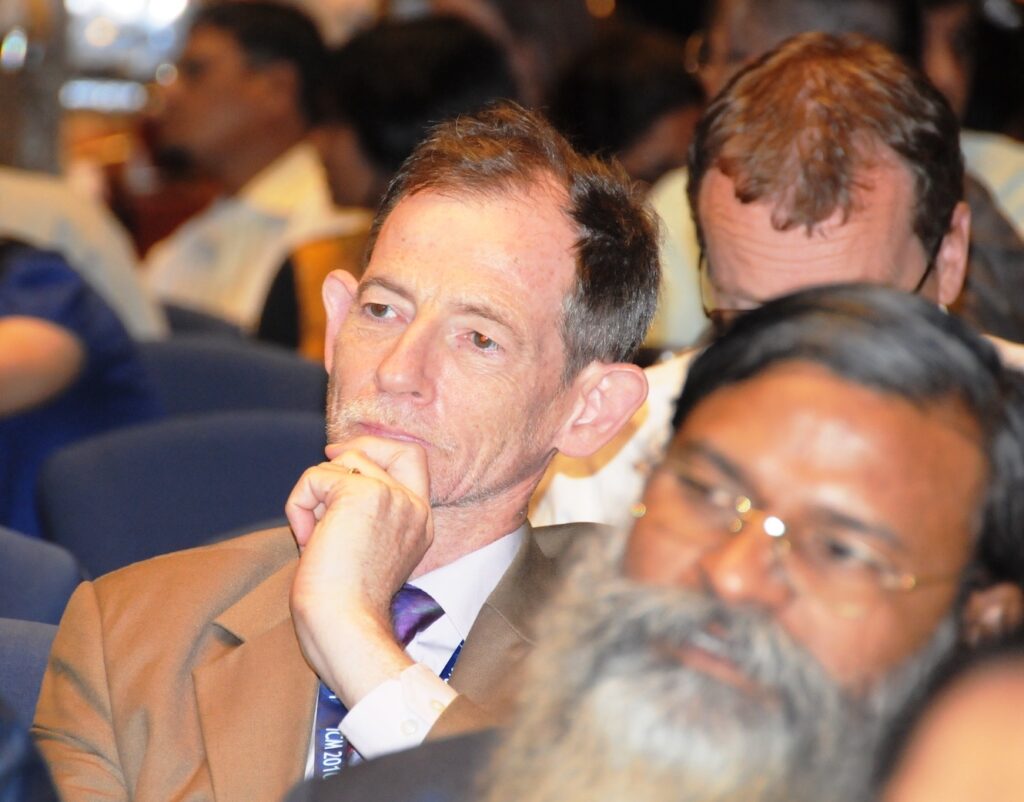
If you plot the hysteresis against one of these parameters, there is an extremely sharp drop in it as you approach the critical value. I think this is interesting from the point of view of machine learning, because you would never discover such materials that way as the desired behaviour occurs in an extremely small part of the parameter space. The data might even cover the right part of the parameter space, but because there is such a sharp drop, you will never see it. So I think that is an interesting and philosophical thing to appreciate.
When you are working on these kinds of problems in interdisciplinary areas, have you felt that the mathematician probably understands the problem differently from a physicist?
JB: Exactly. Different fields have a different understanding of what understanding means. And so a materials scientist or an engineer may say that they understand something when they understand the physical processes involved, but that is not the same for a mathematician. I recently moved into what is a third sort of new field for me, computer vision. In materials science and for liquid crystals, I have previously gone through this process of interacting for the first time with a new field. It goes something like this.
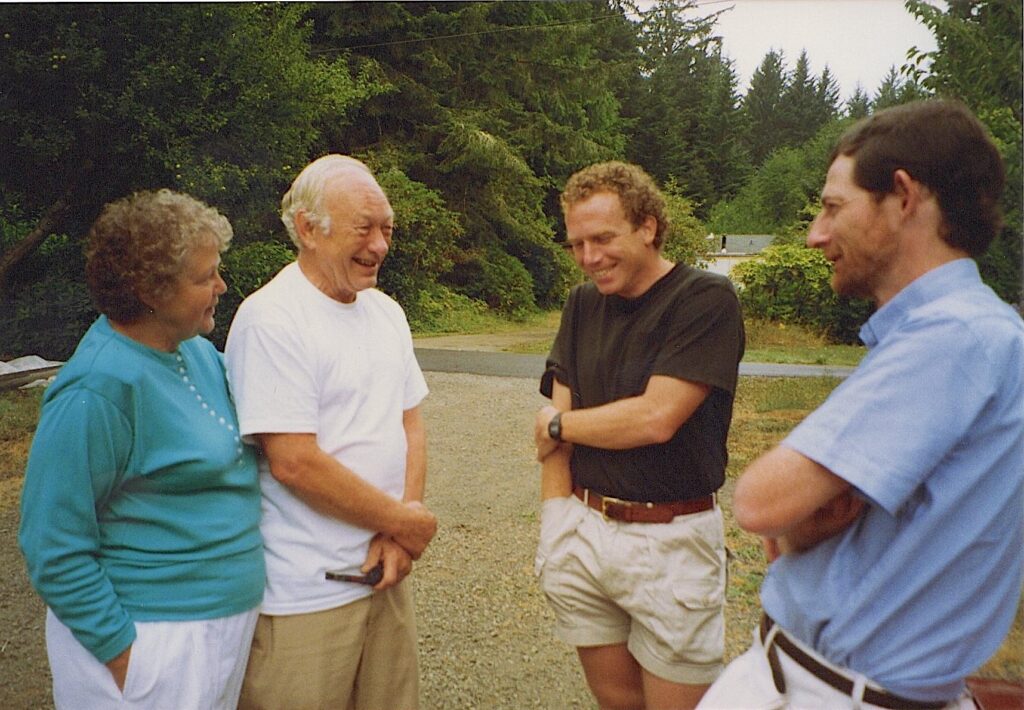 |
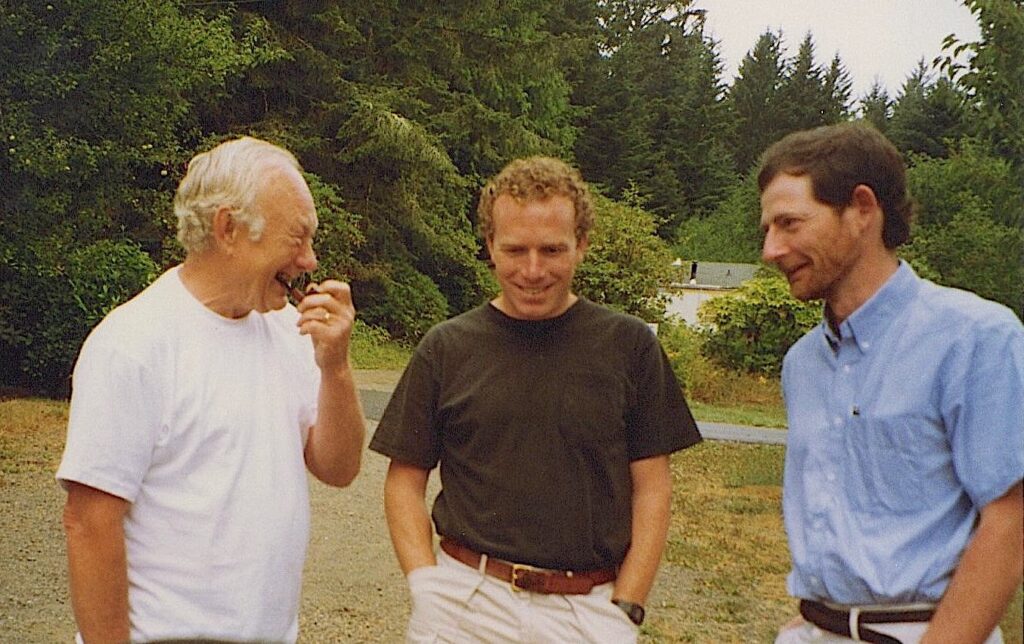 |
You learn something random that interests you in the field. Maybe you go to a seminar, or you talk to somebody or whatever, right? And then, when you move into the field, you have to have a certain sort of confidence that there is something you might be able to contribute, which is new. On the other hand, you also need to be humble, because those working in the new field may say, but you are ignoring this and this and this, and they’re right – you are ignoring those things. But as mathematicians we think that really understanding the predictions of some simplified theory is really important. So, that’s a mathematical way of thinking. So you have got to have this kind of combination of confidence and humility, I think. If you don’t have the humility, then you will never really learn what is going on in the field, and you won’t be able to make any kind of impact on it. You have to sort of embed yourself in the field gradually.
Different fields have a different understanding of what understanding means.
So, you have many layers of understanding to unpack.
JB: Yes. Even though I have worked on these microstructure problems for many years, it’s just a tiny part of materials science. I never did a materials science undergraduate degree. So you pick up these things, but you really know rather little. For me it is the same with liquid crystals, and even more so with computer vision.
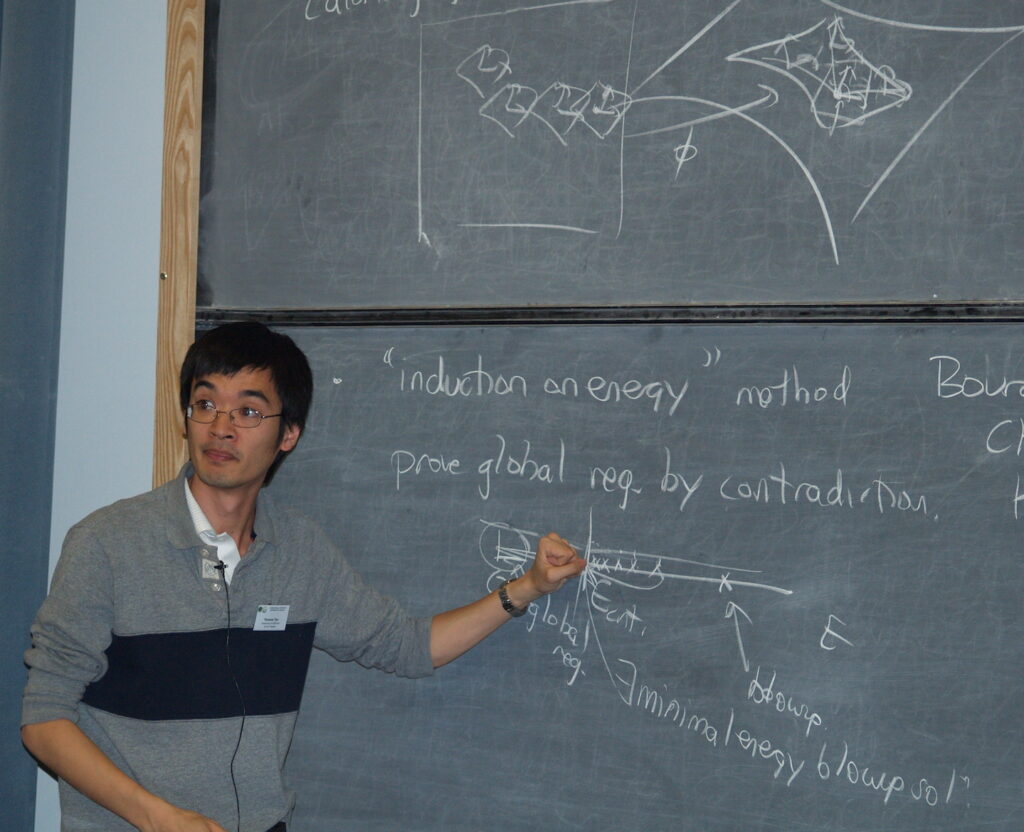
Would it be right to say that physicists have more intuition and mathematicians have a better understanding?
JB: It is interesting. Somehow in liquid crystals, because of topology, and defects and such stuff, it fits with the mathematical tradition. And some of the physicists who work in this area have a better hands-on understanding of topology than typical mathematicians do, because they really understand and visualize these things. So, the push back from experts in liquid crystals for me was almost nothing. Everybody was very happy because they had already known that there were mathematicians working in the area. Whereas in materials science it was a little bit different. At the beginning there was a bit of a push back until you got accepted, and they realized that you were not a threat or something!
You have got to have this kind of combination of confidence and humility.
This kind of research reinforces the idea that posing the right kind of questions is as, or perhaps more, important than coming up with answers.
JB: I think that is right. When I was at school, I remember there was some essay competition which I entered but didn’t win, the topic of which was “In science, asking the right question is the most important thing’’, or something like that. I think that’s absolutely right, and in mathematics you encounter people who have different ways of evaluating the importance of what they’re doing, which are sometimes a little bit difficult to understand. For example, there are many people who think that something is important because it is technically difficult, right? Of course, some things that are technically difficult can be tremendously important. But also things that are simple can turn out to be more important, because if you identify some sort of simple principle you can apply, well, lots of people will understand it and apply it.
A classic example in the calculus of variations is Gamma convergence, which is almost just a definition. It is almost a triviality in a mathematical sense, when you compare it to other things in mathematics. But it is incredibly important, and thousands and thousands of papers use Gamma convergence.
Moving on to lighter questions now, do you have any other interests?
JB: I like watching football.
Are you a boyhood fan of any club?
JB: I support Manchester United in England, but in Edinburgh I tend to go to watch Hearts. I do go to football games sometimes.
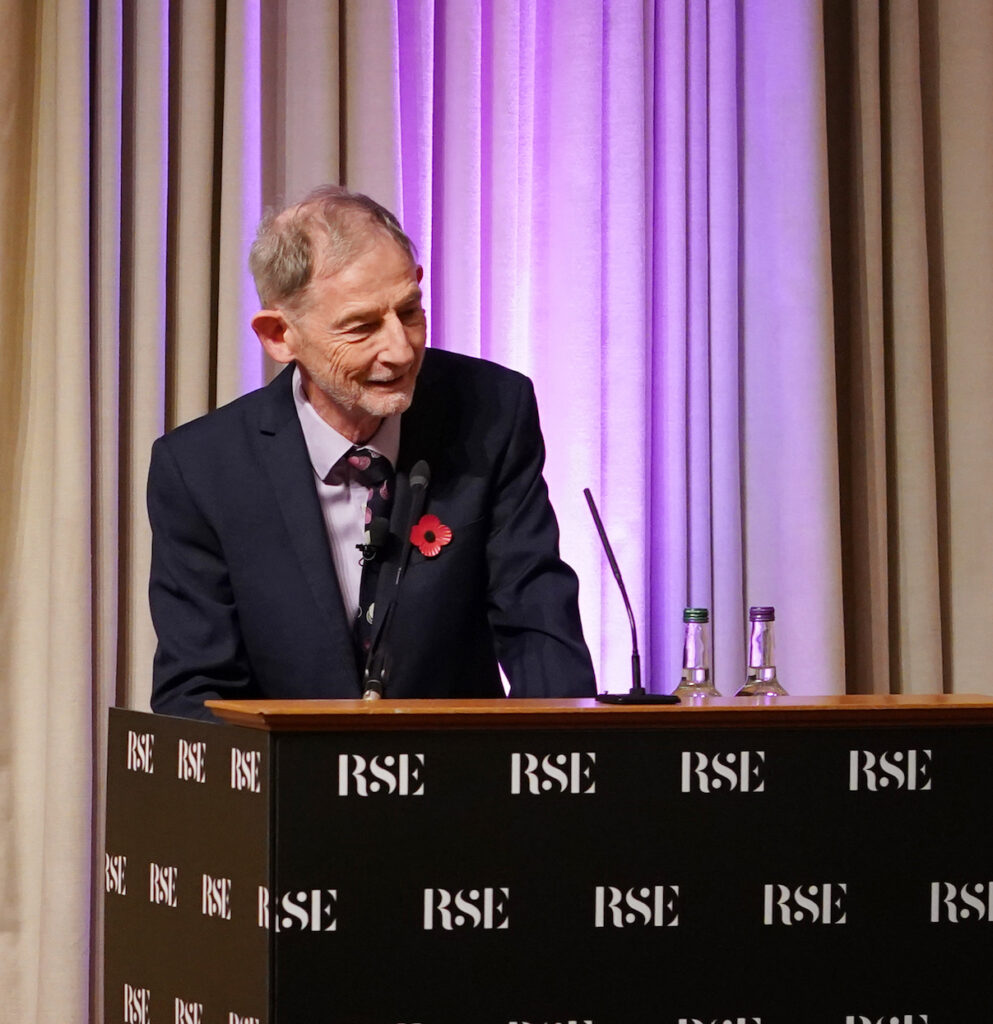
Did you play football at any time?
JB: I did at one stage but unfortunately I managed to break my hip doing so and playing football sort of ended with that. I was never any good at football anyway, but it was over. My two sons are good at football. In fact, of all my children the only one who ever got a prize at school was my youngest son and he got it for football.
I play chess, but nowadays, just blitz online chess, which is quite interesting.
How important has family been for you given the many demanding positions you have taken?
JB: Incredibly important and supportive. I think very differently from my wife, which makes it kind of an interesting combination.
Given your high profile career, you have probably met many people. But are there any who have had some profound impact on you?
JB: Scientifically, yes. Among senior figures the most personal influence on me was Jerry Ericksen. He died two years ago (in 2021). We were very good friends and he was very encouraging and had a tremendous original mind. I remember that in the first draft of my paper on existence in non-linear elasticity, there was some kind of phrase or footnote where I criticised something Ericksen had done. I got a long handwritten letter from him, because in those days it was usual to send handwritten letters. I realized that I completely misunderstood what he had said, so I apologized and I changed it. But that was interesting. He could have approached it differently, but he approached it like a Guru talking to a young student.
He left the university system early.
JB: Yes, exactly. He retired early because he got fed up with all the administration and then he went to live in Florence, Oregon. He had this lovely house. Eventually his wife died. Then he was living on his own, and later he had an accident. For the last couple of years of his life he was essentially in a nursing home. I remember visiting him there and it was sad, since he said he was just waiting to die. My daughter went to see him, fairly close to the time when he died. Anyway, he was a great personality.
I sometimes think that it is quite unfortunate that someone like Ericksen whose work involves some really high quality mathematics is somehow not that well known to the mainstream maths community, or rather outside of the mechanics community.
JB: Yes, I think so. But I don’t know if that is completely correct. I mean, he was in a mechanics department at Johns Hopkins, but his mathematics was of a very high level. He was influenced by people like Max Zorn and Eberhard Hopf during his time at Bloomington. His thesis advisor David Gilbarg was a student of Emil Artin.
He interacted extremely well with analysts even though he wasn’t an analyst himself. He was kind of open minded to realise what analysis could do and so on. And, all this work of Haim Brezis and Jean Michel Coron came with Ericksen introducing them to problems of liquid crystals.
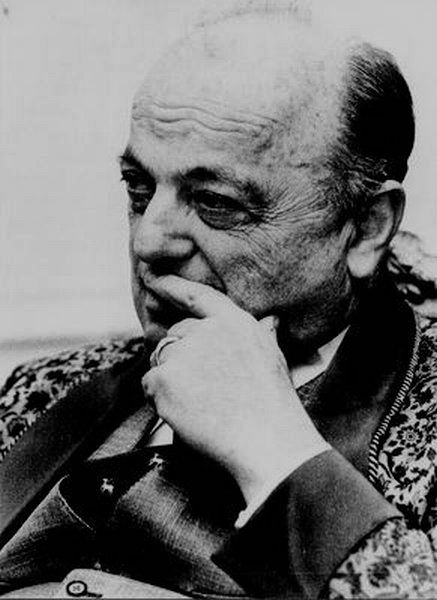
I was also influenced by Clifford Truesdell, as I already mentioned.
Did you interact with him?
JB: With Truesdell? Yes of course! There are so many colourful stories about him, some of which happened to me. For example, Ericksen invited me to give some lectures at Johns Hopkins and I was staying with him. Ericksen didn’t want to have dinner with Truesdell. So I remember borrowing his car, a Volkswagen I think. I was told that dinner was at 7:30, but that I should arrive earlier for drinks. So I arrived there at around 7:00 and parked the car. There is this big mansion in Baltimore, called “Il Palazzetto’’ where Truesdell lived as a kind of eighteenth century figure. That day it was hot, above 30 degrees, and I was dressed in a suit and tie and everything. There wasn’t a doorbell, but there was a rope and pulling on it rang a bell which jangled. Then, Charlotte his wife leaned out of a turret up above and said, “Oh it’s you John. You’re early. Clifford is in his shorts. Do you mind?’’ I didn’t understand what shorts actually meant in America, because it means underpants. Anyway, I said, of course not. So, here I am dressed in a suit and tie, the door opens and there is Truesdell, dressed only in a white pair of underpants. I went in, and he says, “Would you like a malt whisky?’’ And so we both had malt whisky. I was in my suit, he was in his underpants, and he showed me around his art collection. It was completely surreal. I have no memory of how I got back to Ericksen’s house, but I drank so much that I hope I didn’t drive.
There is this big mansion in Baltimore, called “Il Palazzetto’’ where Truesdell lived as a kind of eighteenth century figure.
Later, when Sedhar was with me in Princeton and we were going down to North Carolina, I suggested that we should go and visit the Truesdells on the way back. She said that she didn’t want to stay with somebody she hadn’t met. I told her she would never forget it, and she never has. It was absolutely extraordinary.
So, he was a real, real character.
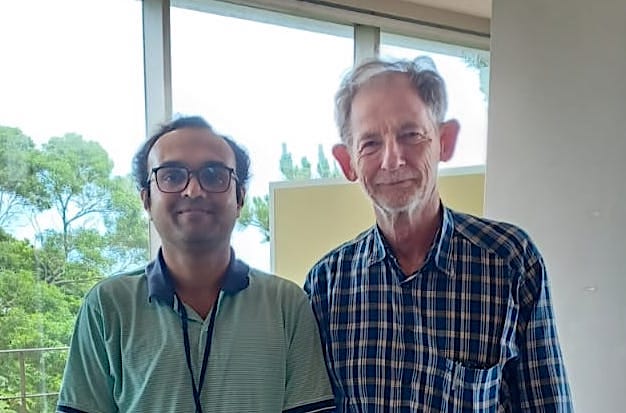
What has been the most satisfying or fulfilling aspect of your distinguished career?
JB: There’s nothing that surpasses finally solving some problem that has puzzled you for a long time. But it doesn’t happen often of course.
Thank you so much Professor Ball. It was truly fascinating to hear about your rich experiences.
Acknowledgement: Vishesh Bhat would like to acknowledge the Okinawa Institute of Science and Technology, Okinawa, Japan for kindly facilitating this interview during Sir John Ball’s visit in July 2023. \blacksquare
Footnotes
- The sudden growth of inherent defects in rubber into large enclosed cavities in response to a negative pressure. ↩
